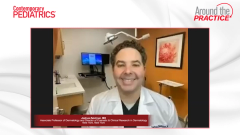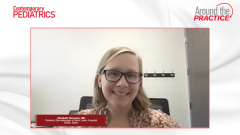
Take-Home Points
Joshua Zeichner, MD; Brittany Craiglow, MD; Elizabeth Swanson, MD; Vikash Oza, MD; and Raj Chovatiya, MD, PhD, provide take-home messages for dermatologists treating pediatric patients with atopic dermatitis.
Episodes in this series

Joshua Zeichner, MD: Thanks so much for that great discussion. It shows how important it is for us to have effective treatments to address the skin itself as well as quality of life in our patients with atopic dermatitis, especially the children. Let’s go one by one to everybody in the panel. I’d love to hear one parting thought. What message do you want to give our audience about treating atopic dermatitis?
Elizabeth Swanson, MD: My departing take-home message would be to inspire, encourage, and empower all the dermatologists and pediatric dermatologists out there to work to treat their patients’ atopic dermatitis. It’s a miserable condition to have. We were limited in our options in the past, but we now have some really good options that can make a big impact on patients’ lives. If you aren’t comfortable with some of the therapies that are now available, try to work to get comfortable or encourage your patients to see somebody who is comfortable, because we have too many good [treatment options] to leave patients suffering with atopic dermatitis.
Joshua Zeichner, MD: Thanks so much, Lisa. Who’s next?
Vikash Oza, MD: I’d put a plug in for education. About 90% of what we’re doing in our atopic dermatitis visit is education. There’s a lot of information that patients have to digest, and a lot of misinformation out there. They’re often patients who have invested a lot in learning about their disease and options, so being able to take the time to help them think through it is important. Even now, when we have all these amazing new treatments, education is still a critical foundation building block of care for atopic dermatitis.
It’s exciting now. The question is, what do we do when our toolbox has so many tools? It’s overflowing. That’s where another exciting aspect of the next phase of this is: personalized care. Are we going to be able to get certain things in our hands, such as biomarkers, that help us filter through all of these immunologic therapies at the level of our patient? That’s going to be cool. Because it’s hard sometimes to decide between choices, especially when you’re in the psoriasis realm, where maybe we’ll be in 5 years, when there are so many options available to us both topically and systemically.
Joshua Zeichner, MD: Great point. Who’s next?
Raj Chovatiya, MD, PhD: When it comes to dermatologists treating pediatric atopic dermatitis, it’s great that we have all these therapies. In particular, we’re seeing revolutions in moderate-to-severe disease. But I encourage everyone out there to understand all the different ways you can look at moderate-to-severe disease, and make sure that you’re capturing your patients, understanding the severity, talking with the families, and seeing who might benefit. Sometimes it isn’t just a quick glance at the skin, and it goes much deeper than that. Understanding all the different domains of activity that we think about with this disease is important.
Joshua Zeichner, MD: Brittany, what about you? What are your parting thoughts?
Brittany Craiglow, MD: I agree with everything that has been said. We always have to remember to treat the patient in front of us and not so much the disease. The other thing is that we all went into medicine to help people, and there’s a lot of burnout, extra [responsibilities], paperwork, EMR [electronic medical record], and all these things. Sometimes these conversations take longer, which can be hard in a busy clinic. But there’s nothing like taking somebody who isn’t sleeping, isn’t going to school, and is miserable, and making them better. It’s so rewarding. Those are the patient interactions that keep you going and make you want to go to work. It might take a little more time, but you’re reaping the rewards too. It’s so fun, and people are so grateful. Remember that if you’re feeling bogged down by all the other stuff.
Joshua Zeichner, MD: Whenever you write a prescription medication, you have to weigh the potential risks with the potential benefits. Sometimes when we’re writing prescription medications, especially for younger children, that can be scary, especially if you aren’t a pediatric dermatologist. But the latest generation of medications that are targeted toward the specific type of inflammation that we see in atopic dermatitis are so safe. As we weigh that potential risk with the potential reward, the reward wins out, and a lot of these cases demonstrated that. That’s the art and science of medicine.
I want to thank everybody so much for this lively discussion. We had a great panel. Thank you so much to our audience. Hopefully, you learned a couple of new tips and tricks about treating pediatric patients with atopic dermatitis.
Transcript edited for clarity.
Newsletter
Access practical, evidence-based guidance to support better care for our youngest patients. Join our email list for the latest clinical updates.











